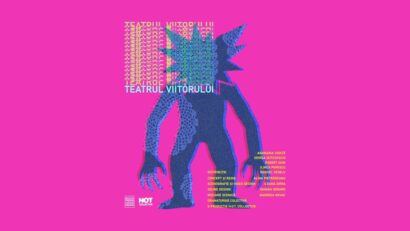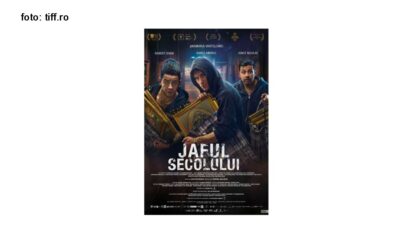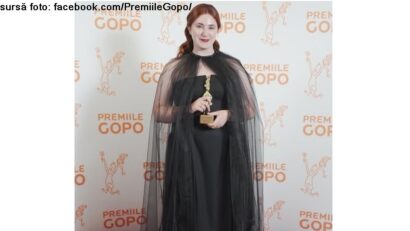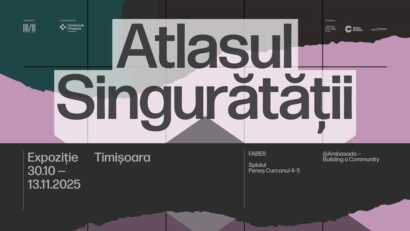The International Dance Film Festival in Bucharest
horeographer and dance film creator Simona Deaconescu is the initiator of the festival

Luana Pleşea, 07.10.2017, 16:43
Three years ago the Bucharest International Dance Film Festival was set up out of a desire to lay the foundations of a creative industry in the field of dance film. It is an event that rapidly managed to gather a numerous public. Choreographer and dance film creator Simona Deaconescu is the initiator of the festival.
Simona Deaconescu: “The whole undertaking started off with myself making films. I made dance films that were highly appreciated in international festivals. One of these films is still appreciated as we speak. Being invited to one of these festivals, I realized what a fine community we had here. You see very many things, films are so different among themselves, and audiences are very large. I expected the festivals to be niche events, but I happened to be in cinema halls with hundreds, almost a thousand people. It is a faithful public, people were casually chatting about this kind of film and were also very passionate about it, they were, like, fans of the genre. I found that very interesting and I said we surely can do something like that in Romania as well, as our audiences are very eager to watch something like that. As long as the public is eager, we, as a creative industry, can also offer products capable of satisfying our audiences”.
The Age of Strange is the concept under which this year, at its 3rd edition, the festival put together a series of events that came up with the idea of return to the natural. There were 35 short-reels, of which 20 entered the international competition, 7 the Romanian competition, while 8 of them entered the Midnight Special series, a visual arts, performance and workshop exhibition.
Speaking about that, here is the festival’s artistic director Simona Deaconescu once again: “We live in an age of suspense, it is an age when we feel the danger, although it may not happen next to you. All the time you feel threatened, one way or another. I sometimes feel we live in some sort of paranoia. We tried to build this edition around this contradiction, that is how the body succeeds to remain natural, does it want to remain natural in our age, or could it alter itself, whether willingly or unwillingly and eventually gets caught up in the context?”
20 films from 14 countries have been selected out of 300 applications for the international competition. Here is Simona Deaconescu with more details: “We have movies about the body politic. For instance, the movie 2-28, which got a special award, talks about General Changs dictatorship in Taiwan. We have movies about the notion of freedom as applied in Israel, movies about the rights and situation of women in Ireland. These are films that have treated contemporary societal issues. We had films that treated in an artistic way the idea of a system. At the same time, we presented films about what dance means in a society, its power, the ability to change , and also movies about strong personalities, strange events or aesthetic experiments, which seemed innovative in terms of dance movies.”
The most daring proposal for this years edition of the International Dance Film Festival was to launch a national competition: “We realized that we dont have enough Romanian dance movies, but that we could put out a call for domestic projects, in order to encourage films like this. We are seeking dance movies with a strong central idea, with an interesting language. We are encouraging Romanian choreographers to collaborate with directors. We selected seven films, very different in style and approach, both in terms of choreography and directing. It is interesting that the award for Best Romanian Film was won by ‘Golden Boi’, a film by two very young female choreographers. The decision of the jury was unanimous, for the fact that it was new and fresh, maybe not perfect, but something that had not been seen before. It is a film with imperfect bodies set in an imperfect scenery. The other films were also well integrated into the context. It seems to me that it is a precedent for future dance movies in Romania.”
The two feature-length movies screened at the festival, though very different one from the other, sold out. La Danseuse, by Stephanie Di Giusto, premiered in 2016 at Cannes, in the Un Certain Regard section. It tells the story of Loie Fuller, a darling of cabaret shows at the Folies Bergere Theater in the first years of the 20th century, who inspired both Toulouse-Lautrec and the Lumiere brothers. The second film, Wim, was made by Lut Vandekeybus, the sister of famous performer, choreographer and director Wim Vandekeybus. Lut’s movie explores the unsettling creativity of her brother.
The third edition of the Bucharest International Dance Film Festival took place over September 7 and 10 at the Elvira Popescu Cinema Hall, the National Contemporary Art Museum, and the Bucharest National Dance Center.






























